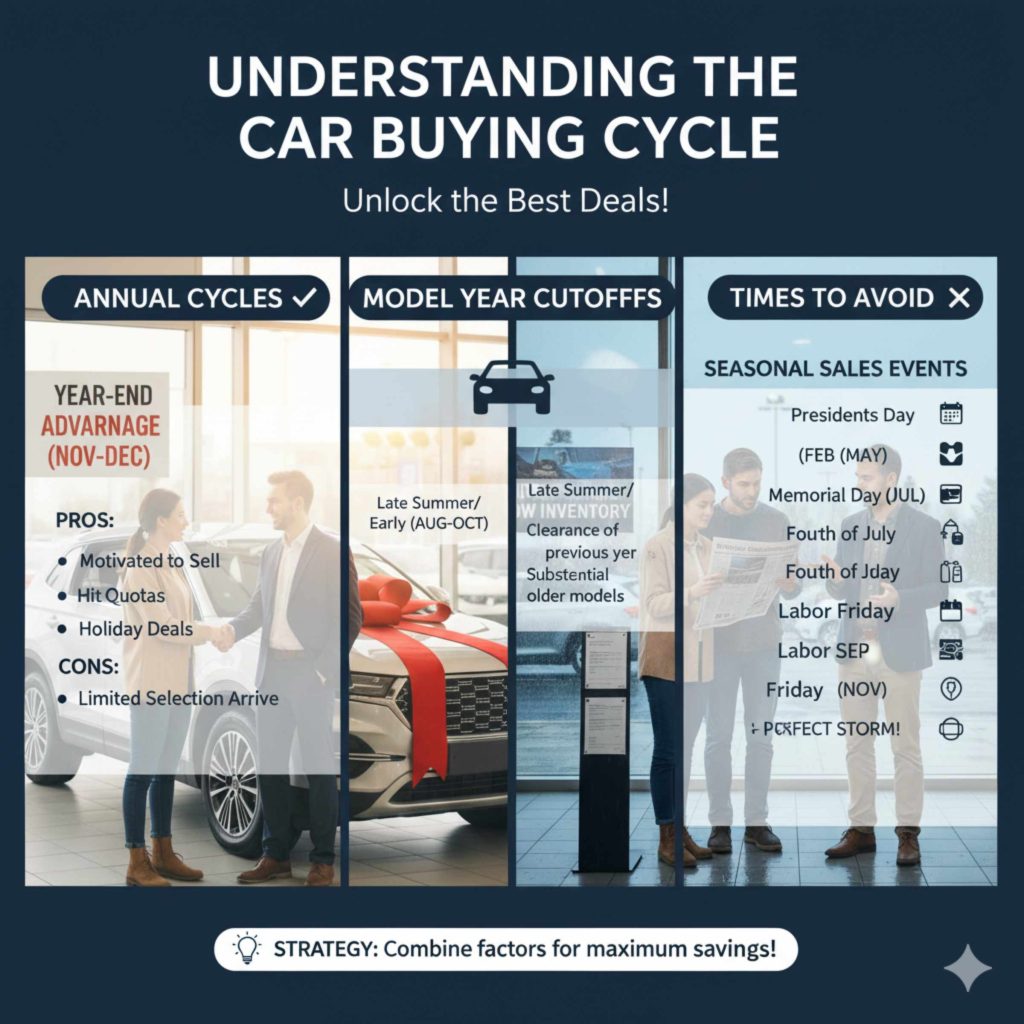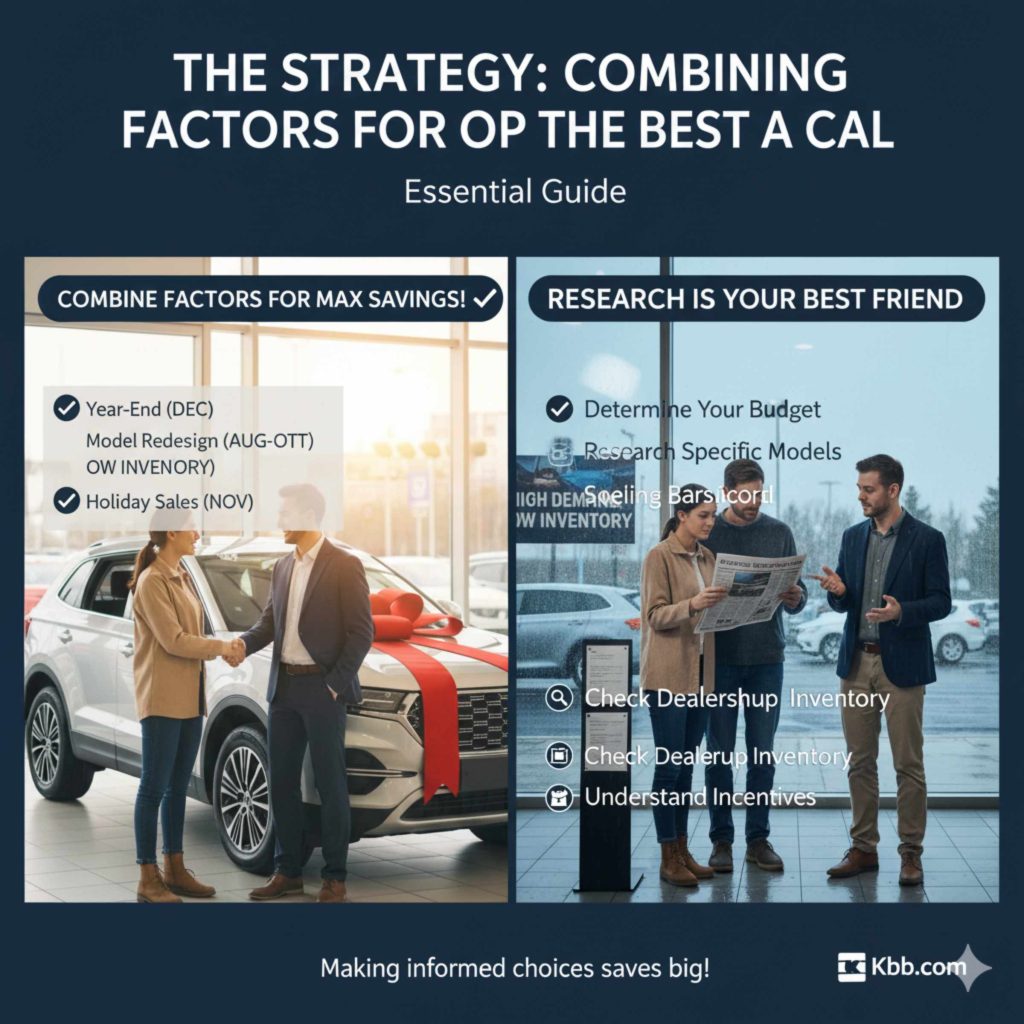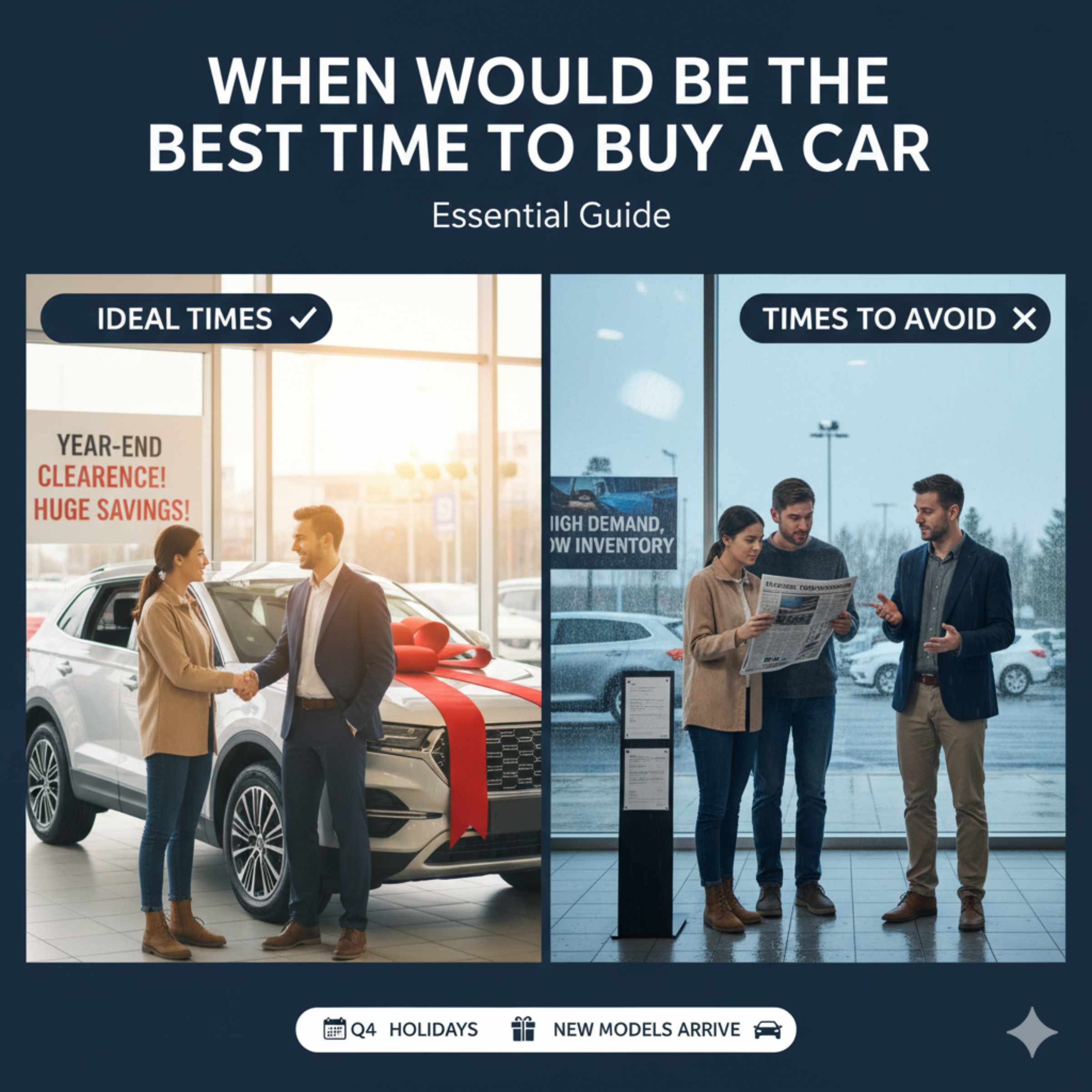The best time to buy a car is often during the end of the year (November-December), at the end of the month, and during major sales holidays. This is when dealerships are eager to meet sales quotas and clear out older inventory, leading to potential discounts for buyers.
Thinking about buying a car can feel like a big step, and figuring out the perfect moment can be tricky. Many of us wonder when we’ll get the best deal so we can drive away happy without overspending. It’s a common frustration, but don’t worry! With a little insight, you can pinpoint those sweet spots that put more money back in your pocket. This guide will walk you through the best times to buy a car, making the process simpler and smarter for you.
Understanding the Car Buying Cycle
Car dealerships and manufacturers operate on cycles, much like the seasons. These cycles are driven by sales goals, inventory management, and the introduction of new models. Understanding these rhythms is key to unlocking better deals. Think of it like finding the best time to buy seasonal produce – when it’s abundant and stores want to move it, prices often drop. The same logic applies to cars, though the “seasons” are a bit different.
Annual Cycles: The End of the Year Advantage
The end of the calendar year, particularly November and December, is widely considered one of the prime times to buy a new car. Dealerships and manufacturers are focused on hitting their annual sales targets. Meeting these targets can mean bonuses for sales staff and managers, and significant incentives from manufacturers. To achieve these goals, they become more flexible on pricing and more willing to offer attractive deals to close sales before the year ends.
Pros of Buying at Year-End:
- Dealerships are motivated to sell remaining inventory of the current model year to make room for next year’s models.
- Manufacturers often offer special holiday sales events and incentives.
- Salespeople may be more willing to negotiate aggressively to meet their quotas and earn bonuses.
Cons of Buying at Year-End:
- The widest selection of specific trims and colors might be depleted.
- New model year vehicles might be arriving, pushing down prices on slightly older models, but you might miss out on the very latest features.
Model Year Cutoffs
As manufacturers prepare to release new model years, usually in the late summer or early fall (think August through October), they need to clear out the previous year’s inventory. This creates another excellent window for buyers looking for a good deal, especially on vehicles that are still essentially new but are technically from the previous model year. You can often get a substantial discount on a car that’s only a few months old in terms of manufacturing date.
Seasonal Sales Events
Throughout the year, several key holidays can signal good times to buy a car. Dealerships often tie promotions and sales events to these periods:
- Presidents’ Day (February): Many dealerships offer holiday sales.
- Memorial Day (May): Often a popular time for car sales events.
- Fourth of July (July): Another common period for manufacturer and dealer incentives.
- Labor Day (September): Frequently marks the start of year-end clearance events as new models arrive.
- Black Friday (November): A major shopping event that extends to car dealerships, offering significant discounts.
These holiday periods aren’t just about patriotism; they’re strategic marketing opportunities for car companies and dealers. They use these breaks in the typical work schedule to attract shoppers with special financing offers and cash-back deals. While the end of the year is generally strongest, these holidays can also present excellent opportunities.

Monthly and Weekly Timing
Beyond the annual cycles, there are smaller-scale patterns that can benefit car buyers. Most people focus on the big picture, but paying attention to monthly and even weekly schedules can give you an edge.
End of the Month Advantage
Similar to the end of the year, dealerships and individual salespeople often have monthly sales quotas to meet. If a salesperson is close to reaching their target, they might be more eager to make a deal, even if it means accepting a slightly lower profit margin. This is especially true in the last week or few days of the month. Don’t be afraid to negotiate during this period; they might be more willing to budge.
The Day of the Week
While less impactful than month-end, the day of the week can also play a role. Weekends are typically the busiest times for dealerships, with crowds of shoppers. This can make salespeople less attentive and harder to negotiate with. Consider visiting a dealership on a weekday, particularly a Monday or Tuesday. The showroom will likely be quieter, allowing the sales team more time to focus on you and potentially be more flexible to secure a sale early in the week.
When to Buy a Used Car: Specific Considerations
Buying a used car has its own set of timing advantages. While many of the principles for new cars apply, there are a few nuances:
Trade-In Season
When new car models are released (late summer/early fall), people often trade in their older vehicles. This influx of trade-ins can mean a broader selection of used cars at dealerships. Some dealers might also be keen to move these trade-ins quickly to make space on their lots, potentially leading to better prices.
Off-Lease Vehicles
Vehicles coming off a lease term are often good candidates for used car buyers. Lease terms are typically 3-4 years, so a consistent supply of these well-maintained vehicles becomes available. Buying at the end of a lease cycle means more of these cars are entering the used market.
Certified Pre-Owned (CPO) Deals
Manufacturers often have incentives on their Certified Pre-Owned programs, especially when they want to drive sales of newer used vehicles. These CPO vehicles have undergone rigorous inspections and come with extended warranties, offering peace of mind. Keep an eye on manufacturer websites and dealership lots for special CPO promotions, often coinciding with new model year releases.
The Impact of Car Models and Redesigns
The lifecycle of a specific car model also influences when you can find the best deals. When a car model is about to be completely redesigned or replaced with a new generation, the outgoing model often sees significant discounts.
Before a Redesign
If a car manufacturer announces a major overhaul or redesign for a particular model, dealerships will work hard to sell off the current generation. This can lead to substantial savings on cars that are still perfectly functional and up-to-date, even if they aren’t the absolute latest iteration. For example, if a sedan is getting a complete redesign for the next model year, the current models on the lot will likely be heavily discounted in the months leading up to the new release.
You can often find information about upcoming redesigns by following automotive news sites or manufacturer press releases. Planning your purchase around this can save you thousands.
After a Redesign
Conversely, right after a new generation of a highly anticipated model is released, the older models might no longer be available, and the new ones might be in high demand, leading to less negotiation room. However, once the initial hype dies down and dealerships have more of the new models in stock, you might start seeing more competitive offers or attractive financing deals to encourage buyers.
When NOT to Buy a Car
Just as there are optimal times to buy, there are also periods when you might want to hold off. Understanding these can help you avoid overpaying:
- Early in the New Model Year Launch: When the very first models of a new generation hit the dealerships, demand is often high, and inventory might be limited. This is typically not the time for significant discounts unless you’re looking at a less popular trim or color.
- During High Demand Periods with Limited Supply: If a particular model becomes unexpectedly popular or faces production issues leading to shortages, prices can skyrocket, and negotiation opportunities diminish significantly.
- When You’re in a Rush: If you absolutely need a car immediately due to an emergency, you lose leverage. Dealers can sense desperation, which can lead to less favorable terms. It’s always best to have some flexibility.
Leveraging Incentives and Financing
Timing your purchase can also help you take advantage of manufacturer incentives and financing deals. These can come in the form of:
- Cash-Back Offers: Direct rebates from the manufacturer that reduce the purchase price.
- Low Annual Percentage Rate (APR) Financing: Special low-interest loan rates, often 0% APR, offered by the manufacturer’s finance department.
- Lease Deals: Attractive monthly payments or reduced down payments for leased vehicles.
These offers are often seasonal or tied to specific model years and can significantly impact the total cost of ownership. A well-timed purchase during an incentive period can combine a good negotiated price with a favorable financing rate, maximizing your savings.
For example, a reputable source like FuelEconomy.gov, while focused on efficiency, also provides information that helps consumers make informed decisions, indirectly aiding in finding value when purchasing a vehicle. Understanding these incentives is crucial, and they are often most generous when manufacturers are trying to boost sales during slower periods or clear out inventory.
The Strategy: Combining Factors for the Best Deal
The truly savvy car buyer doesn’t just pick one factor; they combine them. The absolute best time to buy is often when several of these optimal conditions align:
Example: Imagine it’s December (end of the year), a particular model is about to be redesigned for the next year (model year cutoff), and there’s a holiday sales event (seasonal sales). This confluence of factors creates a perfect storm for potential buyers, maximizing the chances of getting a significant discount.
Research is Your Best Friend
Regardless of the timing, thorough research is non-negotiable. Before you even step foot in a dealership, you should:
- Determine your budget: Know exactly how much you can afford, including all associated costs like insurance, registration, and maintenance. Tools like calculator.net’s auto loan calculator can help you estimate monthly payments.
- Research specific models: Identify the cars that meet your needs and compare their original MSRP (Manufacturer’s Suggested Retail Price) with current market prices.
- Check dealership inventory: Websites like Edmunds, Kelley Blue Book (KBB), and Manufacturer sites allow you to see what vehicles are available and where.
- Understand incentives: Look for current rebates, special financing, and lease deals on manufacturer websites.

A Practical Timeline to Consider
To help visualize the best times, consider this general guide:
| Time of Year | Why It’s Good for Buyers | Potential Downsides |
|---|---|---|
| November – December | End-of-year sales targets, holiday promotions, clearing out current model year inventory before new ones arrive. Sales staff motivated to meet quotas. | Limited selection of specific trims/colors. New models might be arriving, so the “latest and greatest” might be more expensive initially. |
| Late Summer – Early Fall (August – October) | Dealerships need to clear out previous model year inventory to make space for incoming new models. Often coincides with Labor Day sales. | Newer models might have higher initial price points. Selection of brand-new outgoing models may be reduced. |
| End of Month | Salespeople and dealerships work to meet monthly quotas. Increased willingness to negotiate. | Less impactful than year-end or model-year changes. |
| Weekdays (Mon-Tue) | Fewer crowds, more personalized attention from sales staff. Potentially more time for negotiation. | Deals might not be as aggressive as during major sales events. |
| During Model Redesigns (approx. 6-12 months before launch) | Significant discounts on outgoing models as manufacturers prepare for the new generation. | You won’t get the absolute latest design or features. |
Frequently Asked Questions
Q1: Is it ever a bad time to buy a new car?
Yes, it can be. Buying at the very beginning of a new model year, when a car is first released, usually means less room for negotiation. High-demand times with limited supply can also lead to higher prices. Rushing into a purchase due to an emergency also removes your negotiating power.
Q2: Should I wait for a holiday sale to buy a car?
Holiday sales, like those around Presidents’ Day, Memorial Day, Fourth of July, Labor Day, and Black Friday, often bring special incentives and discounts from manufacturers and dealerships. While not always the absolute best time, they are generally good opportunities to find deals.
Q3: How much difference can buying at the right time make?
The difference can be significant, potentially thousands of dollars. By strategically timing your purchase, you can benefit from lower negotiated prices, attractive financing rates, and cash-back incentives, all of which reduce the overall cost of the vehicle.
Q4: When is the best time to buy a car if I need the absolute latest model?
If you must have the newest generation with all the latest features, the best strategy is to wait a few months after its release. This allows the initial demand to cool down, and dealerships are more likely to have ample inventory, potentially leading to better deals and more financing options becoming available.
Q5: Are there specific brands that have better timing for deals?
While timing principles are generally universal, individual brands and dealerships may have unique sales cycles and incentive programs. Some brands might offer more aggressive deals during traditional “slow” months to boost sales, while others stick closely to holiday and end-of-year events.
Q6: How do I know if a car is about to be redesigned?
You can stay informed by following automotive news websites, subscribing to newsletters from car manufacturers, and paying attention to industry rumors. Dealerships will also often signal an upcoming redesign by offering significant discounts on the current model.
Conclusion
Navigating the car buying landscape doesn’t have to be a guessing game. By understanding the annual, monthly, and even model-specific cycles, you can position yourself to secure a fantastic deal. The end of the year, the shift from one model year to the next, and major holiday sales events are consistently the most favorable times to make a purchase. Remember, though, that your own research, a clear budget, and a willingness to negotiate are always crucial, regardless of the calendar. Armed with this knowledge, you’re well-equipped to make a smart decision and drive away with confidence, knowing you got the best possible value for your hard-earned money.

